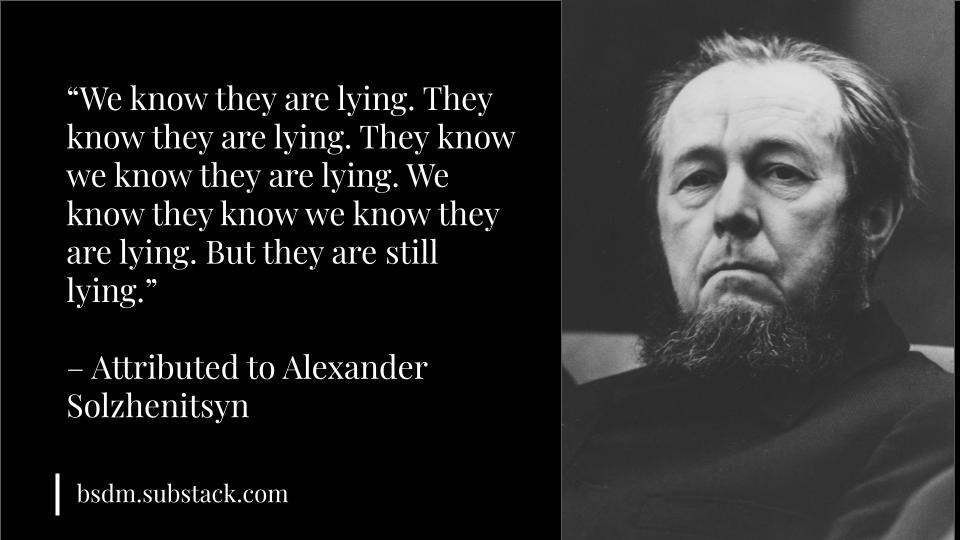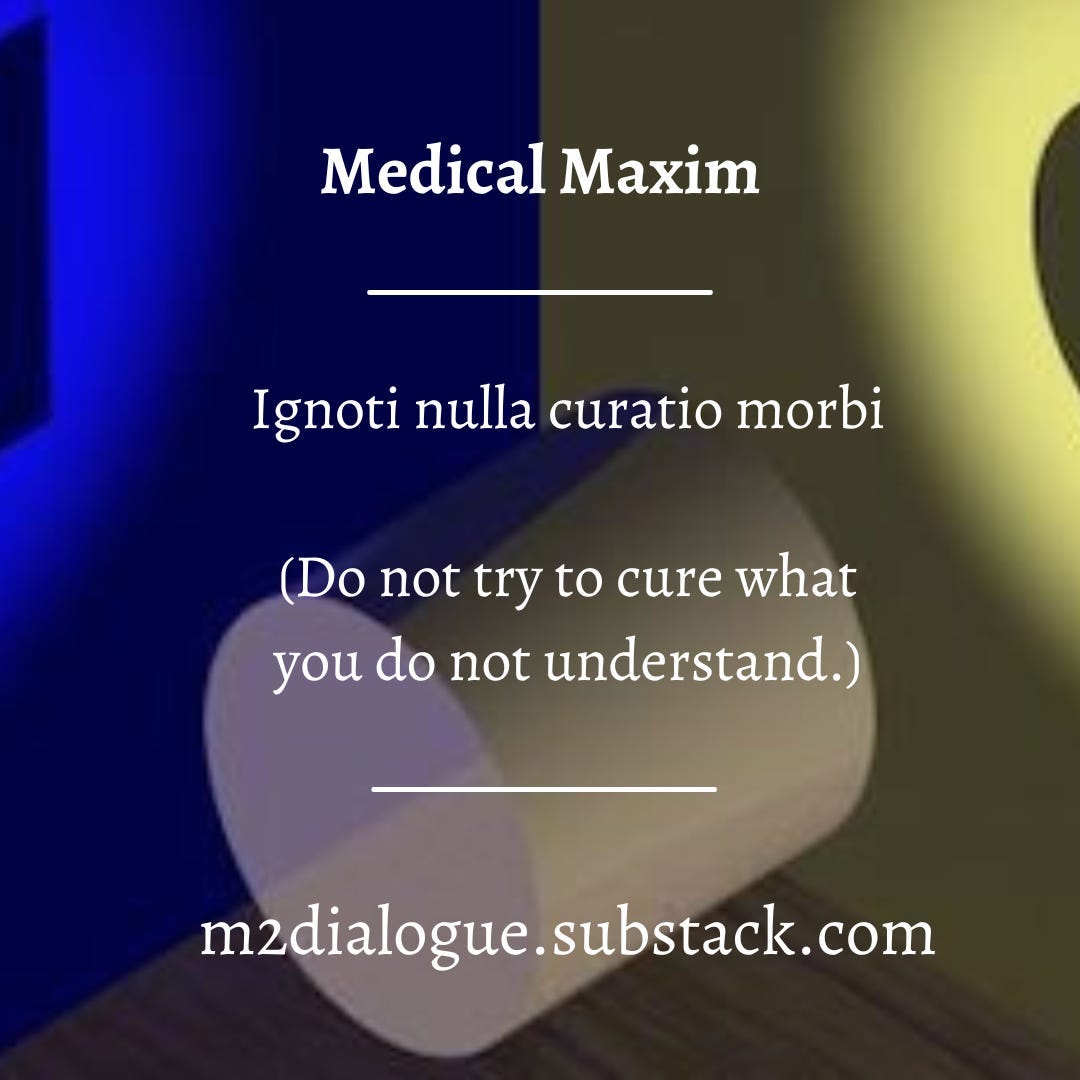This blog is a study of human responses to fractal falsehood, which I define as a ceaseless recurrence of self-similar patterns of distortion and distraction across scales, domains and dimensions. I regard this phenomenon as an existential threat.
I recently published a typology of responses to existential threats. In Survival Strategies: Prophecy, Anti-Prophecy, and Realism, I presented two responses — Prophecy and Realism — in which people understand what threatens them, and one response — Anti-Prophecy — in which people shield themselves from this understanding. Anti-Prophets bet on survival through ignorance.
Based on this description, few people might identify as Anti-Prophets, but Anti-Prophecy is often the default response to existential threats, including the threat of fractal falsehood. In Prophets and Realists, the default path of willful ignorance elicits a missionary zeal to convert the Anti-Prophet. However, as I argue in Seize the Means of Perception: Alternatives to Survival through Ignorance, the zealotry of Prophets and Realists generally serves to deepen willful ignorance — not only the willful ignorance of the Anti-Prophets but also of the missionaries themselves.
A more fruitful response to fractal falsehood and all existential threats is to understand what’s happening. We can’t know where the process will take us, but it must begin with understanding. Otherwise, we violate the bedrock principle expressed in the medical maxim “Do not try to cure what you do not understand.” (In Latin: Ignoti nulla curatio morbi.)
By understanding, I don’t mean the kind of insight we achieve when we enact one of the three archetypal survival strategies. I don’t even mean the kind of new insight we gain when we change strategies — for example, when an Anti-Prophet converts to Prophecy or Realism. The shift of perspective only changes what we see. A more liberating response to fractal falsehood requires us to seize the means of perception. When we reclaim our senses, we change not only the sense data but also the sensor, and we find ourselves in greater intimacy with the horizon of self-knowledge and the knowledge of our world.
Two Responses to Fractal Falsehood
I’d like to illustrate the difference between survivalist and liberated responses to fractal falsehood with two contrasting descriptions of normal madness.
Solzhenitsyn: They Are Lying!
The first description, often attributed to Alexander Solzhenitsyn, brings to mind a world in which:
“We know they are lying. They know they are lying. They know we know they are lying. We know they know we know they are lying. But they are still lying.”
Even with the help of Google Gemini, I couldn’t confirm whether and where Solzhenitsyn wrote or spoke this description of the world we inhabit. Regardless of its provenance, the description is beautifully flawed. It’s beautiful because it matches and evokes our lived reality of pervasive and persistent falsehood unmitigated by mere awareness. The flaw in this description is in its use of pronouns: “we” and “they”. With these designations, the description separates them, the liars, from us, the people being lied to. In this way, the description absolves us of our complicity in fractal falsehood.
Reb Nachman of Breslov: A Mark of Sanity
As I suggested in my introduction to the three survival strategies, a better description of our moment in history comes from Reb Nachman of Breslov (1772-1810). He described both the problem and the remedy through the parable of tainted wheat. As told by Rabbi Rami in A Mark of Sanity:
“Upon discovering that the country’s wheat harvest was tainted by a nearly undetectable fungus that would drive the people insane once consumed, the royal astrologer informed the ruler. “There isn’t enough wheat left from the last harvest to avert famine,” the ruler said. “Without this infected crop, the people will starve. What can we do?”
The astrologer advised that they should survive on the remains of the untainted wheat while the rest of the country descends into madness. The ruler objected, saying, “If we do that, our sanity will seem like insanity to the people, and they will turn against us. Instead, we must also consume the tainted wheat. But before we do, let’s wear a mark to remind ourselves that we are insane.”
What is the tainted wheat of our time? What is it that activates the self-protective instincts of the Prophet, the Anti-Prophet and the Realist? I prefer not to waste words on descriptions and definitions of what we can all sense. Nor do I want to nitpick other people’s descriptions and definitions. Regardless of how we interpret Reb Nachman's parable, we may never reach a languageable consensus about the tainted wheat of our time. However, even without a non-metaphorical definition of the tainted wheat of our time, we know its effect: it’s driving us insane.
Clinging to sanity is yesterday’s game. Today, it is a form of denial. Untruth has flooded our world, and it is inimical to sanity. Who among us can claim to be untouched by this devastation of our epistemic order? Who can claim to be an observer and not a participant in the ambient madness? Among the 8.2 billion humans living through the Big Bang of Bullshit, does anyone smell like roses? The remedy for insanity isn’t a return to sanity but a deepening of our self-awareness.
For Rabbi Rami, the price of this remedy is the price of a bronze bushel-of-wheat lapel pin. The price can be even lower, depending on one’s taste in mementos. But the personal cost is tremendous because the “Mark of Sanity” marks the end of ideology. It marks the collapse of Life Inside Isms. It also serves as our connection to Reality.
Find your Mark of Sanity. Stay connected.





